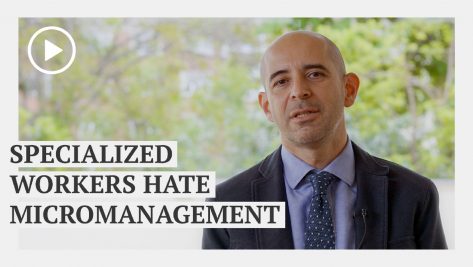Various factors are responsible for the high percentage of family businesses that do not endure beyond the first generation. The most important issue is intra-family conflict, which explains the demise of no less than two thirds of family businesses.
To ensure continuity, it is essential to adopt appropriate business-governance mechanisms that are also well-suited to the family itself. Such mechanisms can prevent conflicts from arising and, if necessary, facilitate their resolution. The goal is to prevent problems from bleeding from one sphere into the other, affecting company’s performance, reputation, and talent-attraction capacity while also putting a dent in its competitiveness.
If the company is unable to offer a convincing value proposition, all efforts will be in vain.
A complex ecosystem
To ensure the continuity of a family business, the first step is a holistic diagnosis of its unique characteristics. The next step is to identify the issues that should form part of the company’s strategic agenda. For example, is there strong family leadership? Do the members of the family have an open communication style? Is the company excessively dependent on a small number of customers or on particular individuals? Is the company equipped to adapt to the numerous changes currently affecting the business world as a result of the one-two punch of globalization and digitalization?
This complex ecosystem consists of three elements: the family, the assets, and the company itself. Holistic governance integrating all three areas is necessary in order to create a space for dealing with strategic issues, to ensure that important matters are not absorbed by day-to-day emergencies. Preventing conflict, implementing measures to resolve it when it arises, and setting priorities are the main tasks of this governance structure. Competitiveness must be prioritized, for without it there can be no future. Good governance has the virtue of lending a sense of urgency to strategic matters.
If the company is unable to offer a convincing value proposition, all efforts will be in vain. The company must develop sustainable and cost-effective growth strategies so that it can survive and ensure a certain standard of living for the family. This will only be possible if the company is clearly oriented towards sustained, cost-effective growth and open to new paradigms—for example, appointing independent directors or raising outside capital.
At least once per generation, the members of the family must develop a strategic program that establishes their shared project and values and defines their ambition and purpose—the elements that comprise the philosophy of the business and the economic and socio-emotional legacy that will be left to future generations. If this profound reflection process is to become a true roadmap, it must be put down in writing and supported by the necessary tools and measures for its implementation.
It is important for companies to take a step back, remember their true aims, and avoid letting day-to-day matters cloud their perspective. This will allow them to reflect on how and when to hand over the reins to the next generation and how to prepare responsible, well-trained shareholders through education and real-life experience. These are issues of the utmost importance for any family business that wants to achieve continuity.
A long-term business project is a team effort, not an individual pursuit.
The transition
The generational transition is a key issue that affects two areas: management and ownership. With regard to the transition in management, it is critical to share a common goal. With that settled, it becomes simpler to define the profile of the ideal person to take control. With regard to the transition of ownership, it is essential to think in terms of governability so as not to create complicated situations in the future, for example by confusing personal and family values with the needs of the company. If the entrepreneurial spirit manages to transcend the founding generation, the path to continuity will be paved with success. Without entrepreneurs, there can be no enterprise.
Over time, highly concentrated ownership models tend to give way to more distributed models—from a single figurehead to a multi-leader scenario. This is akin to a governing party losing its majority and shifting to plurality rule, which requires deal-making and coalition-building. This transition must preserve the true essence of the business while striking a permanent balance between the wisdom of the elders and the energy and creativity of the younger generations, between short term and long term, between tactics and strategy, and so on. Balance is always the best recipe.
Families have to be thoroughly prepared to share leadership spaces and reach agreements. A long-term business project is a team effort, not an individual pursuit. Generosity and constructive communication, in formal spaces designed for this purpose, are necessary to create cohesion among people and around the project. Equally important is the complex task of differentiating each member’s various roles: family, ownership, and business must not get mixed up.
If anywhere in the ranks of an entrepreneurial family there is a shortage of passion, pride, or interest in adding value—if the passion to keep building the legacy is lacking—then no tool or recommendation can do any good. In the modern business family, value creation must extend to all interest groups, hence the growing interest in philanthropy among many such families.
© IE Insights.











